Q&A June
A monthly Digest feature celebrating 20 years of ANAT Synapse, where we ask an ANAT Synapse alumnus about their place within the art + science + technology network.
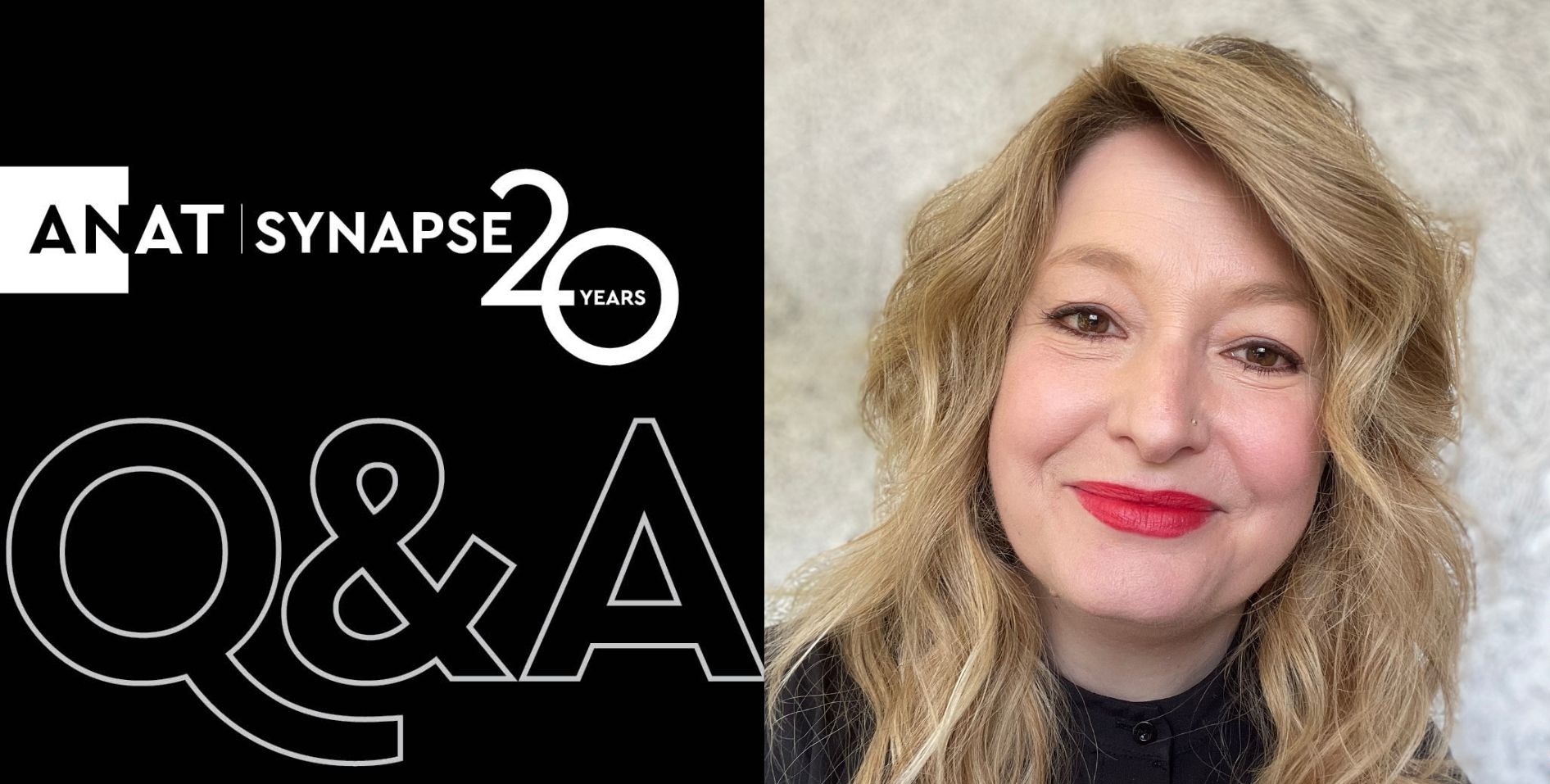
Svenja Kratz, image courtesy of the artist.
Svenja Kratz
Svenja Kratz is an artist, educator and researcher working at the intersection of art, science, and technology. She holds a PhD in Biotechnology and Contemporary Art from the Queensland University of Technology (QUT) specialising in cell and tissue culture and interdisciplinary arts practice. Since 2008, Svenja has worked with artists and researchers across music, design, architecture, electrical engineering, molecular biology, cell culture, genetic engineering and biomanufacturing to produce solo and collaborative works that explore the complexity of living systems and highlight the philosophical implications of engineered life. She is a 2021 ANAT Synapse art-science residency recipient and her creative works have been exhibited at local, national and international venues including the Sydney Powerhouse Museum (2013), Contemporary Art Tasmania (2016) and The Science Gallery London (2019). Svenja is based in lutrawita | Tasmania and works as a senior lecturer in interdisciplinary creative practice at the University of Tasmania.
Can you tell us about your ANAT Synapse residency and where the research has led you?
Over the past few years, my work has increasingly focused on ideas of immortality and genetic lineage, particularly how I might establish an ongoing non-human genetic legacy via biotechnological intervention. This direction was initially inspired by my status as a single, childless woman in the later stages of reproductive capacity. It was further magnified in 2020 when I was diagnosed with a very large fibroid (a benign tumorous mass) in my uterus. The fibroid caused severe symptoms and required surgical removal. While the experience was unsettling and filled me with a deep sense of grief and loss, I reclaimed agency by rethinking the fibroid as a ‘fertile possibility.’ Indeed, I started to regard the mass as a ‘Tumour Baby’ and envisioned using tissue from the fibroid to create an immortalised cell line as an alternative form of offspring. I was fortunate to find scientific collaborators – A/Prof. Brad Sutherland and Dr. Jo-Maree Courtney – from the University of Tasmania’s (UTAS) School of Medicine, who helped me isolate and freeze cells from the fibroid.
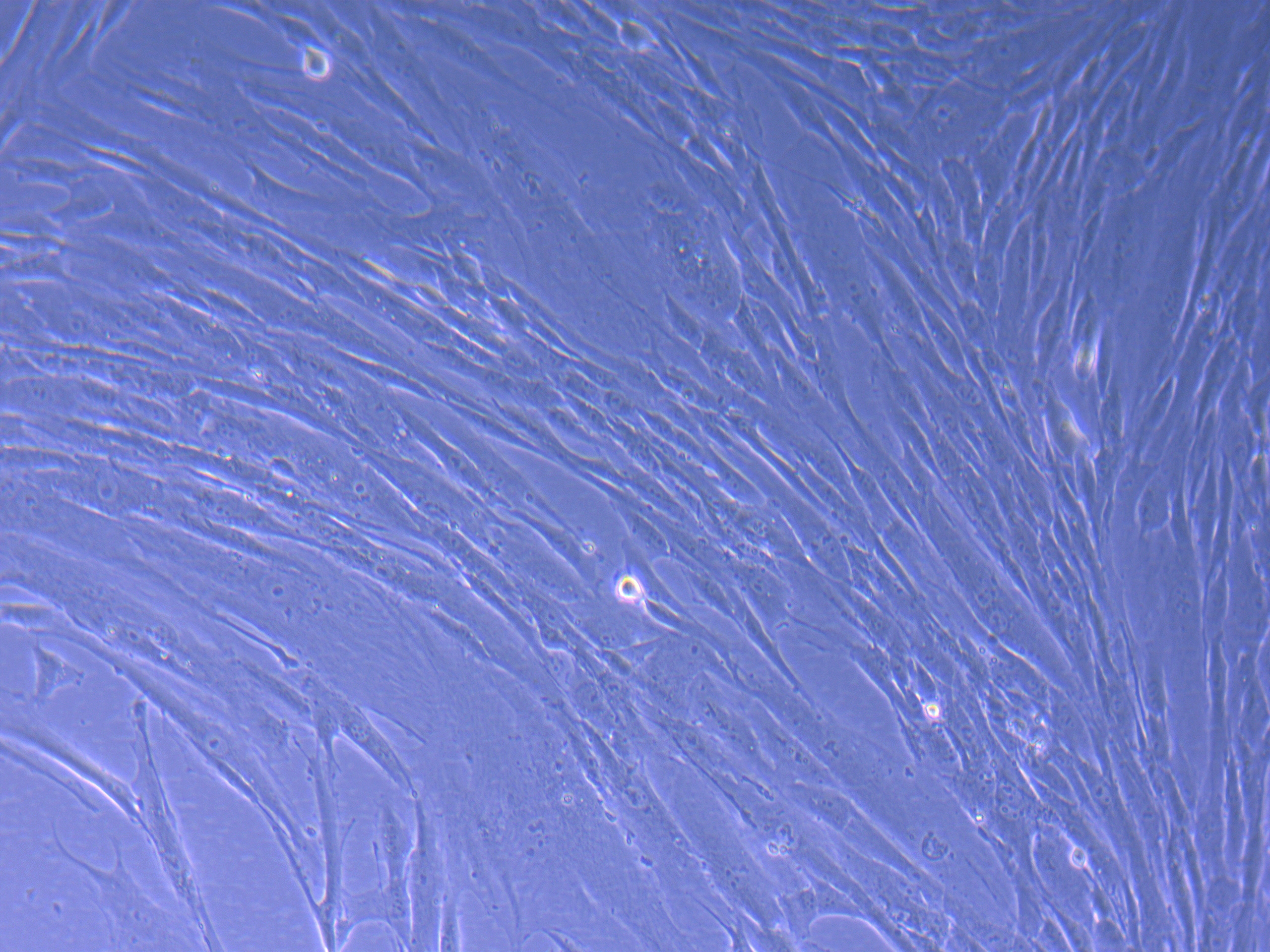
Light microscope image of initial fibroid cell culture, 2020. Image courtesy of Dr Jo-Maree Courtney.
The ANAT Synapse residency offered the opportunity to continue working with Brad and Jo-Maree and realise the ambition of creating a cell line and using the experience to reflect on alternative conceptions of motherhood, fertility, and genetic lineage. The aim was to immortalise the fibroid cells through the introduction of viral genes that disrupt replicative senescence – the mechanism within cells that limits their number of divisions. This process would result in cells that can replicate continuously, serving as a potential commercial stock cell for both scientific and artistic research. Thus, ensuring their ongoing survival and proliferation. As part of the residency project we also worked with A/Prof. Jane Nielsen from the UTAS Centre for Law and Genetics to consider existing regulatory and ethical issues and the legal frameworks governing the ownership, use, and patenting of biological material.
During the residency, Jo-Maree and I attempted to culture the fibroid cells but encountered difficulties in optimising the culture conditions, and they did not grow well enough to undertake the immortalisation process. COVID-19 also disrupted shipping channels, complicating the procurement of the necessary cell immortalisation kits from the US. In response, we pivoted to using an established process to isolate peripheral blood mononuclear cells (PBMCs), or white blood cells with a single nucleus, and reprogrammed them into induced pluripotent stem cells (iPSCs). Conceptually, I appreciated the connection to blood and kinship, and iPSCs, as stem cells, have the capacity to transform into any other cell type, offering opportunities for ongoing exploration of transformation.
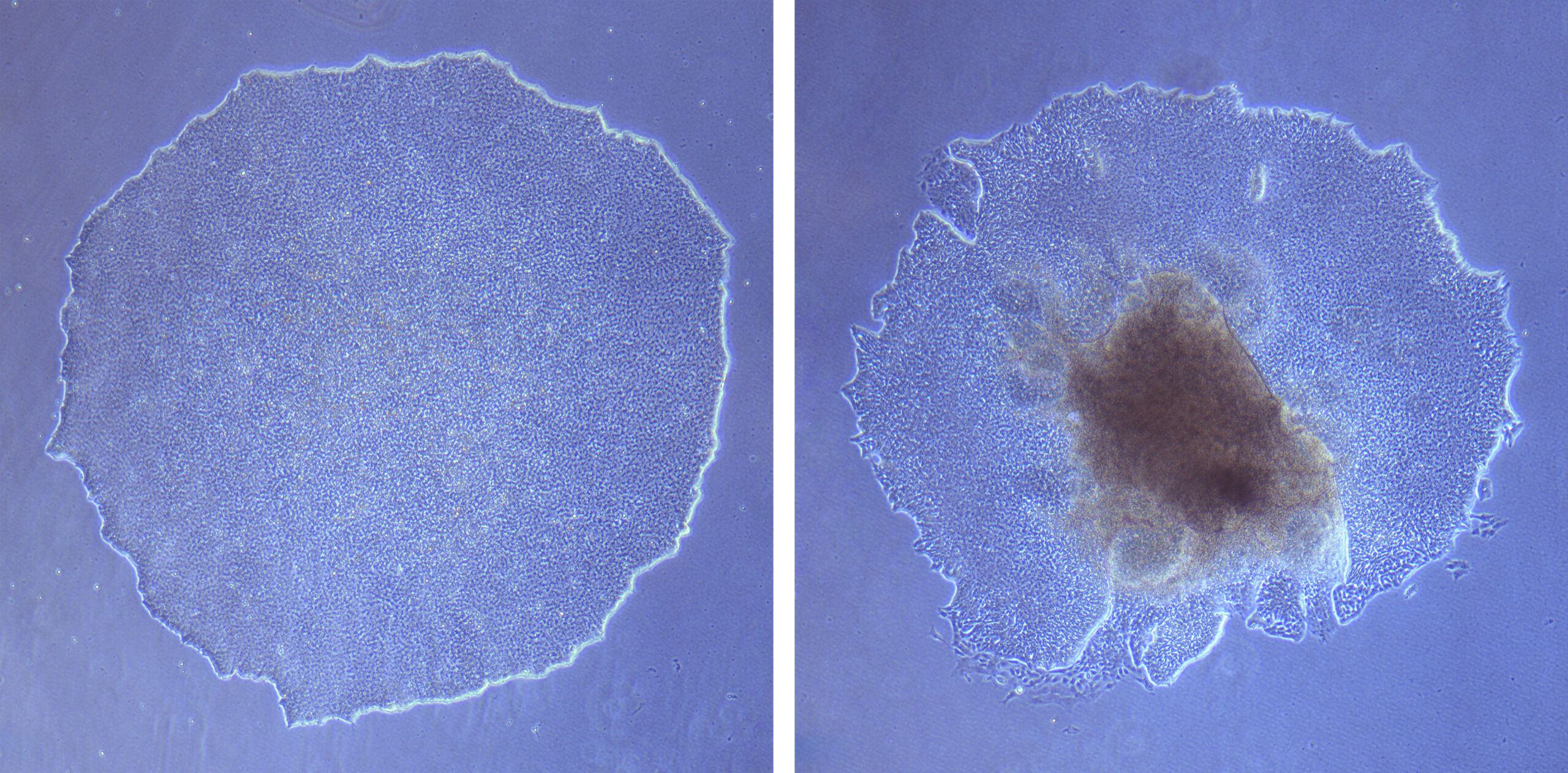
Light microscope image of iPSC colony (left) and iPSC colony starting to differentiate (right), 2022. Images taken during Synapse residency at the UTAS School of Medicine.
I collaborated with stem cell experts Dr. Ashish Mehta and Dr. Ariane Gelinas-Marion to reprogram the blood cells using a commercial iPSC creation kit that employs the Sendai virus (a rodent respiratory virus) to introduce core transcriptional factors necessary for reprogramming somatic (non-reproductive) cells. The basic reprogramming process took about two weeks, but stabilising the iPSC cell line and ensuring they were virus-free took an additional few months, involving labour-intensive maintenance to prevent the cells from differentiating into other cell types. By the end of the residency, we had two iPSC clones – SK1 and SK2 – along with hundreds of images and video footage of the iPSC cultures growing and differentiating.
Alongside these outcomes, we presented a multi-component exhibition titled Non-linear Histories #2: Genetic Legacy at the Barracks Gallery in New Norfolk, Tasmania. The exhibition reflected the establishment of the iPSCs as alternative offspring and explored the creative potential of endings and entanglements fundamental to existence. Working with A/Prof. Jane Nielsen, we also presented a paper at the ANAT SPECTRA conference, reviewing legal precedents and policies related to the ownership of human body parts, including cells and tissues, using the SK1 and SK2 cell lines as an example.
I am currently still firmly enmeshed in the Posthuman Genetic Legacies Project. Last year, I continued my affiliation with the Sutherland Group at the UTAS School of Medicine and worked with Brad and Jo-Maree to differentiate the iPSCs into pericytes. Pericytes are specialised cells that wrap around the endothelial cells lining the capillaries and venules throughout the body. They are crucial in blood vessel formation, maintaining the blood-brain barrier, and regulating blood flow. Pericytes were chosen because they are key cell types in the Sutherland Group’s research into peri-vascular function, focusing on cerebral blood flow, stroke, and Alzheimer’s disease. Creating pericytes meant that my cells could be used as stock cells within the group’s research, moving towards the uptake of my cellular offspring into routine scientific research, thus furthering their expansion and proliferation.
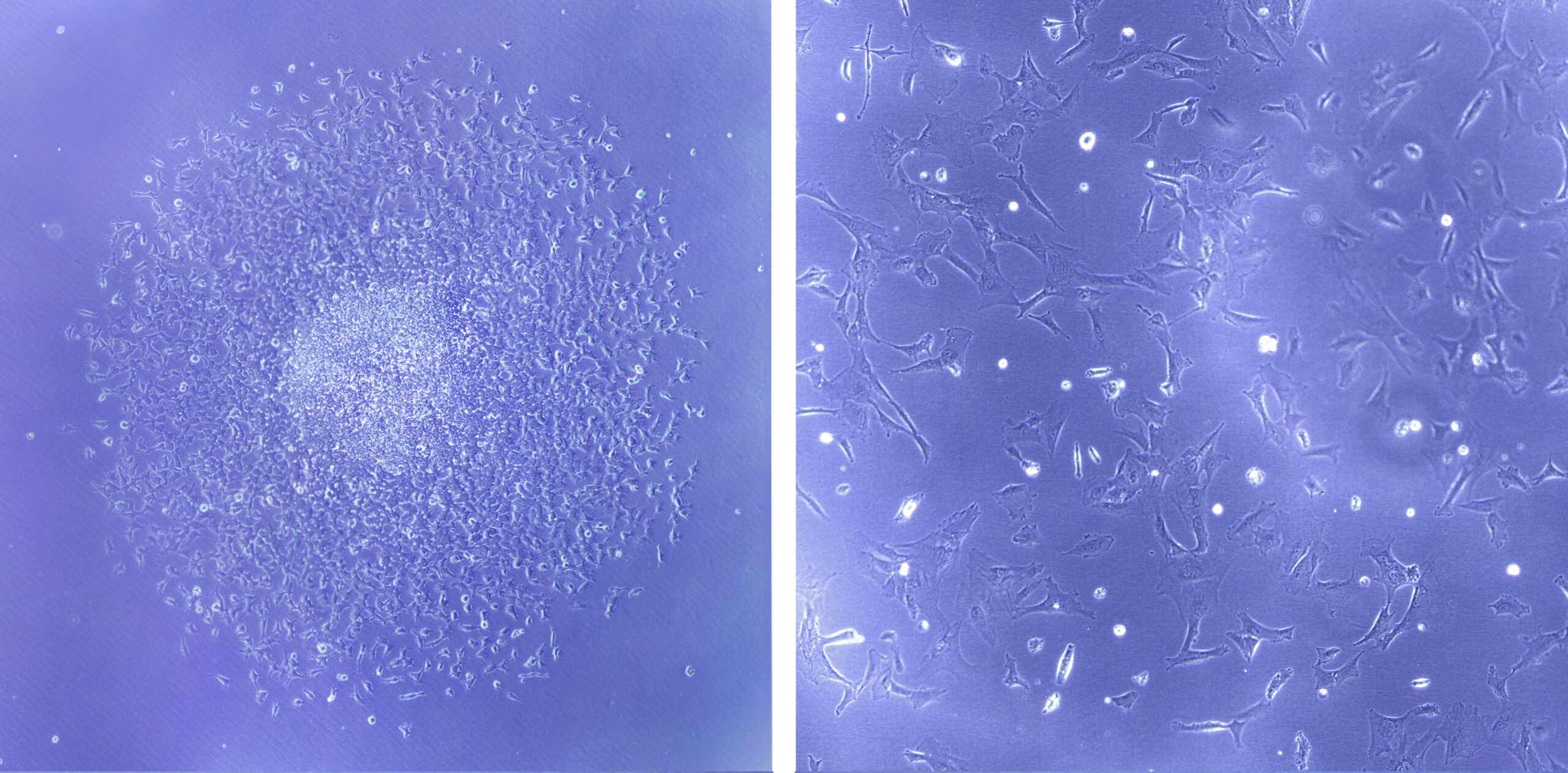
Light microscope image of iPSC colony differentiating into pericytes (left) and established pericytes from iPSCs (right), 2023. Images taken at the UTAS School of Medicine.
From this engagement, we developed several creative works reflecting on themes of transformation and the foundations of life. These works were showcased in the collaborative exhibition Transformation Studies at the Moonah Art Centre, Tasmania. The exhibition integrated fixed cell cultures, reworked video, and cell culture images documenting cellular changes, programmed cell death, and the formation of 3D structures (embryoids) in vitro. Collectively, the artworks examine how interdisciplinary approaches can signal invisible cellular changes and reveal the generative and transformative potential of living cells. The creative works also referenced the atomic and molecular foundations of life found in the wider universe, including carbon, hydrogen, oxygen, nitrogen, and amino acids, alongside cycles of death and renewal. One notable piece, Reprogramming Peripheral Blood Mononuclear Cells (PBMCs): A Composition Outside of Time Scale and Certainty after Wassily Kandinsky, visually documented the stages of iPSC development, drawing connections between the micro and the macro, inferring how both art and science rely on imagination, intuition, and creative synthesis to produce meaningful outcomes.
Overall, the ANAT Synapse residency has been a pivotal chapter in my practice. It enabled the time and space to realise the ambition of creating an artist cell line and further facilitated ongoing relationships with colleagues from art, science, and law. As such, the residency has provided a solid foundation for future works within the Posthuman Genetic Legacies series, but also to use the resulting cells in other projects. I am quite keen to explore the idea of ‘becoming mineral’ by reprogramming the iPSCs into bone cells.
What is the biggest challenge of being an interdisciplinary artist?
The most significant challenge of being an interdisciplinary artist is navigating the complexities of multiple fields while striving to create a meaningful integration between them that is both scientifically informed and artistically compelling. Each discipline has its own language, methodologies, and cultural contexts. Bridging these differences can be difficult and requires the ability to communicate and collaborate effectively with people from different knowledge domains. So, finding the ‘right’ collaborator is really important. It is not just a matter of ‘getting along,’ but sharing an attitude and openness to embracing the specific affordances that each discipline offers. Of course, this also applies to the artist.
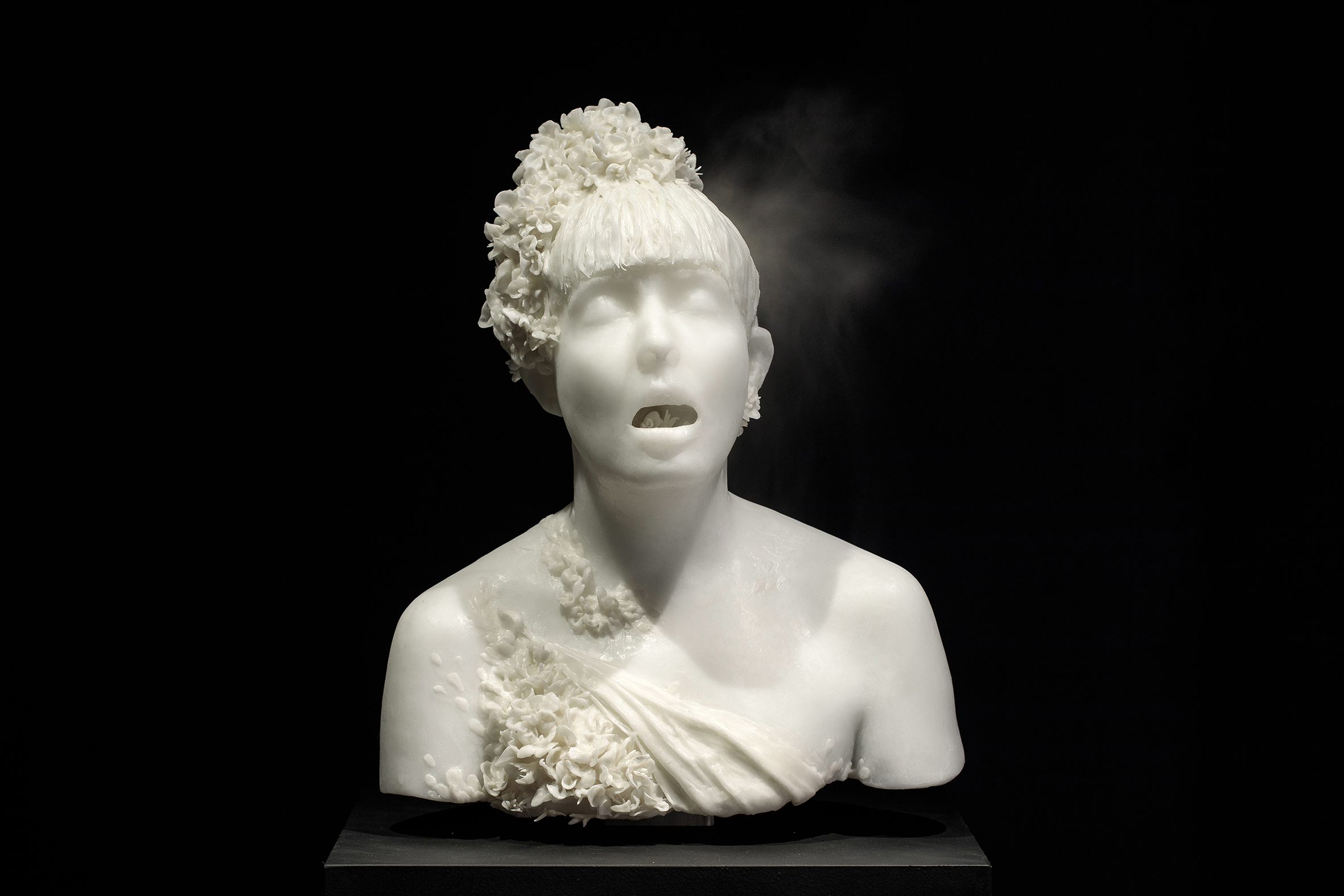
Svenja Kratz, Self-portrait #2: Site of Infection, 2019. Mixed media: wax, porcelain polymer clay, water vapour containing the DNA of the artist, electrical components. Installation view: Plimsoll Gallery, Hobart, Tasmania. Photo: Remi Chauvin.
Interdisciplinary projects often require substantial time, resources, and support from various institutions. Securing funding and gaining access to necessary technologies/equipment and expertise can be really challenging. There can also be the need to continually justify the value and relevance of interdisciplinary work to both scientific and artistic communities, which may have differing expectations and criteria for success. Indeed, it seems to be getting harder to validate projects that do not result in immediately tangible and pragmatic outcomes. This is why I think organisations such as ANAT are so important in offering resourcing for in-depth collaborative exchange and exploration that is not tied to a set metric or ‘key performance indicator.’
For me, as an artist who works across media art and fine art, another challenge lies in falling between genres. I often feel like my work does not quite fit anywhere comfortably. While influenced by science and technology, creative outputs sometimes take on a more form traditional form such as marquetry, sculpture or painting. The art world relies on classifications to define and understand an artist’s work. Galleries, curators and funding bodies often use these labels to place works within specific disciplinary contexts, which can be crucial for visibility and support. So, I do worry sometimes that not being clearly one thing or another, not fitting neatly into a predefined box, may limit opportunities.
What kind of mentor-mentee relationships have you experienced throughout your years of practice? Is there any particular mentor or mentee that stood out for you?
I’ve been incredibly fortunate to have wonderful mentors who have significantly influenced the development of my practice. During my PhD, I had the privilege of being co-supervised by the respected scientist Prof. Zee Upton. At that time, she led the Tissue Repair and Regeneration Group at Queensland University of Technology’s Institute of Health and Biomedical Innovation. Despite my lack of a formal science background, Zee welcomed me into the research group, providing comprehensive training in cell and tissue culture alongside her other honours and PhD candidates. This inclusion and support were pivotal in building my confidence and skills to work independently in the lab, which was essential for my ongoing research in the biomedical field. Her dedication extended to reviewing my publications and thesis to ensure scientific accuracy and advocating for the value of interdisciplinary research. I am profoundly grateful for her belief in my work and her guidance during such a critical phase of my professional development.
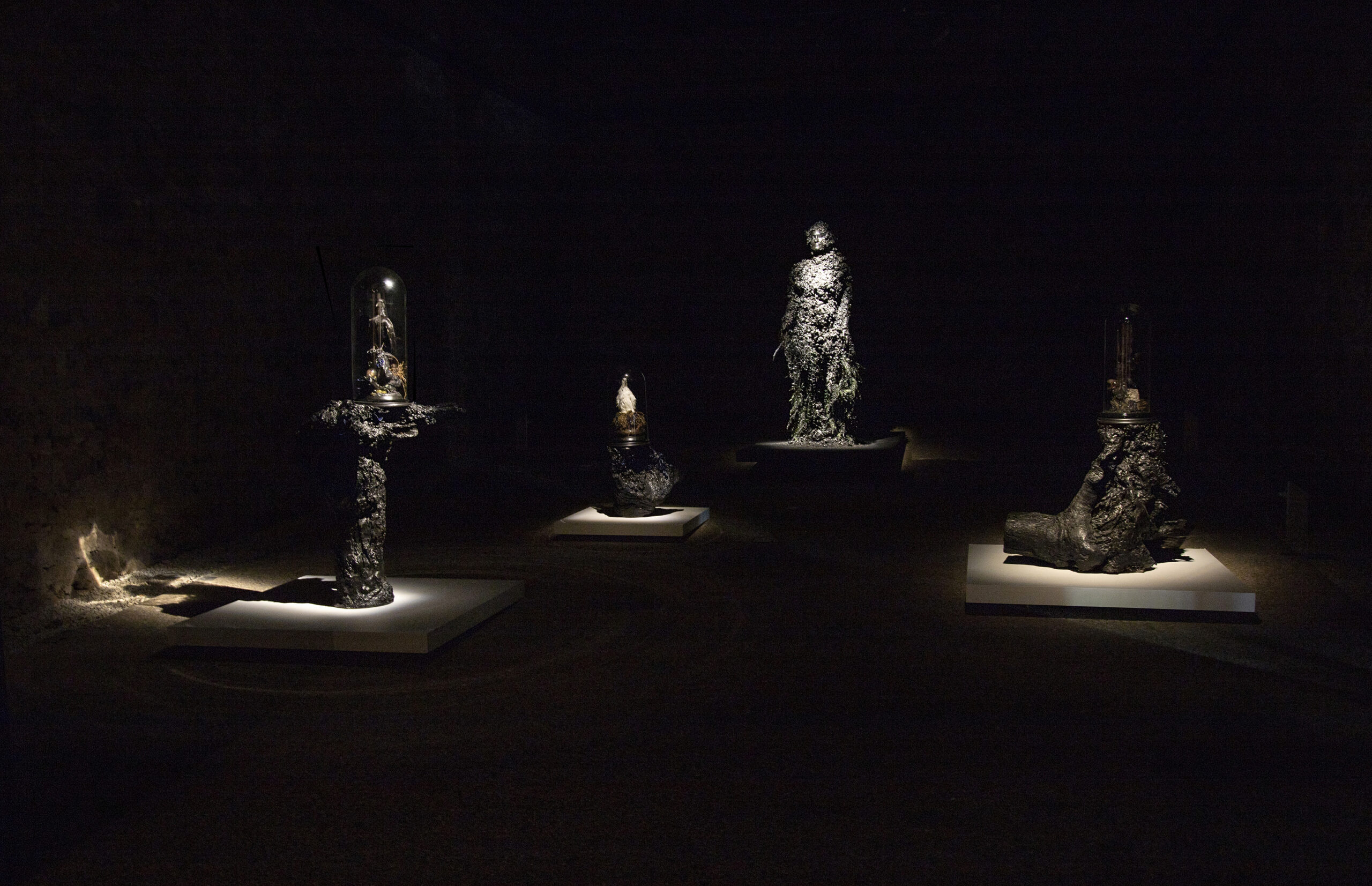
Svenja Kratz, Coming to Terms with Being Forgotten (sculpture) and Memento Mori (dome works), 2020. Mixed media: fibreglass, wood, wax, clay, acrylic paint, real and faux flowers (sculpture); wood, polymer clay, acrylic paint, MDF, taxidermy, human hair, glass (domes). Installation view: Rosny Barn Gallery, Tasmania.
I am also deeply indebted to Oron Catts and Ionat Zurr from SymbioticA at the University of Western Australia. During a 2010 residency at SymbioticA, they generously supported the development of new works and introduced me to a broad network of artists and scholars engaged in biological arts. Over the following decade, they have continued to offer guidance and foster connections that have enriched my practice. Their support has left a lasting impression, and I aspire to offer similar support and collegiality to other artists working in the field.
As an interdisciplinary artist, who and what are your biggest influences?
As an interdisciplinary artist, my influences span a wide array of fields. In the realms of science, technology, and philosophy, pioneers such as Donna Haraway have profoundly shaped my understanding of the posthuman condition. Her work on cyborgs and the intersections of humans and machines, alongside her more recent ecologically focused writings, emphasise the need of “staying with the trouble.” Of course, other usual suspects in the posthuman terrain, including N. Katherine Hayles, Rosi Braidotti and Karen Barand, have helped position my work within a wider network of critical thought.
The writings of Gilles Deleuze and Félix Guattari were foundational in developing my approach to practice. Their concept of the rhizome, though now perhaps considered dated and overused, encouraged me to think relationally and to consider each work, experience, and movement as part of an ongoing, interconnected, fluid, and dynamic network of relations and potentials. I have also found inspiration in the work of Elizabeth Grosz and Erin Manning, who build on Deleuze’s ideas to further embrace becomings and multiplicities. More recently, I have been introduced to the field of Queer Death Studies and found resonance in the work of Nina Lykke, Tara Mehrabi and Marietta Radomska, who offer an alternative critical lens in the context of death and mourning.
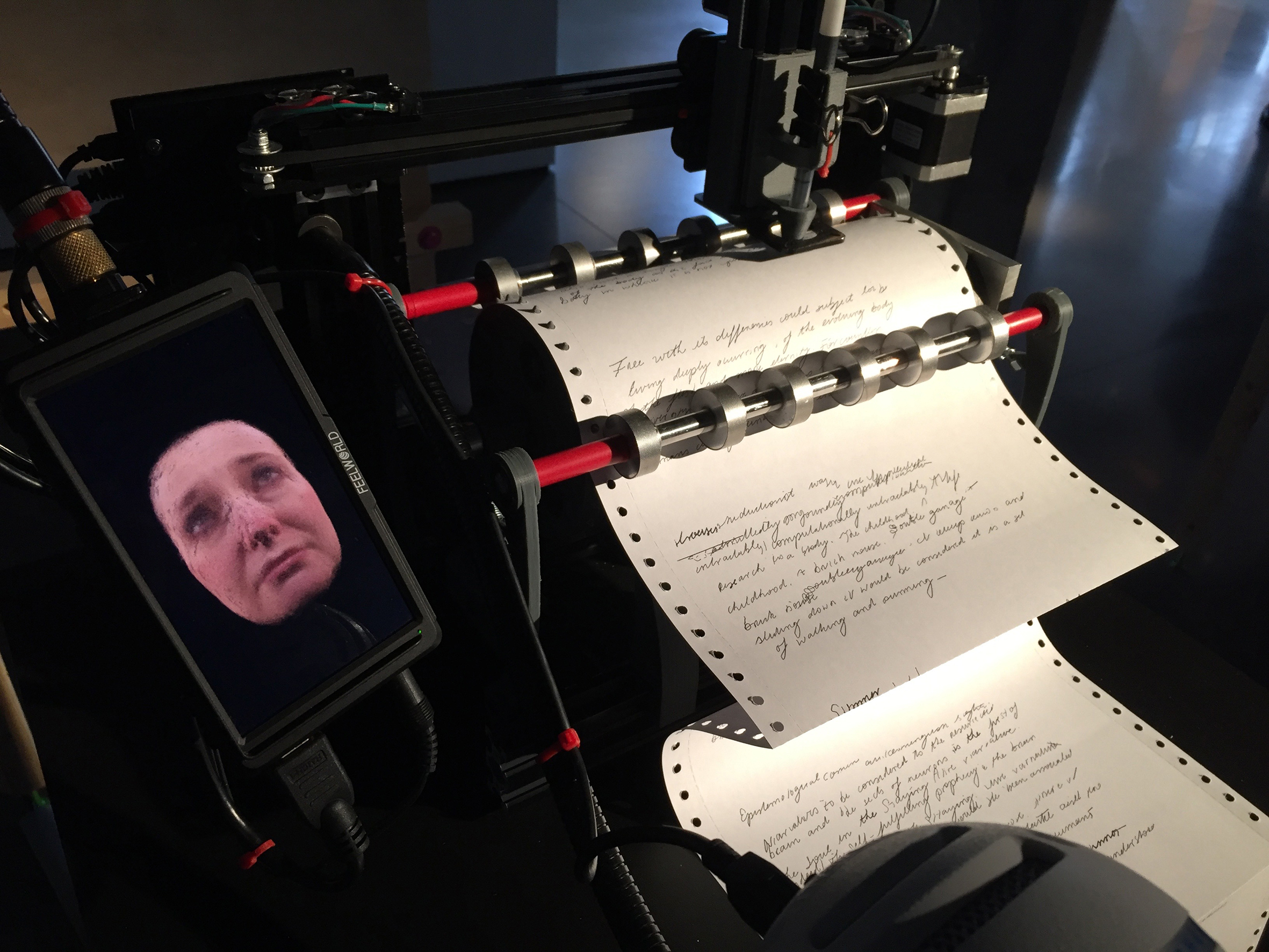
Svenja Kratz and Bill Hart, Ghost Writer, 2019, Interactive custom AI writing machine with video avatar. Installation view: Spare Parts, Science Gallery, London.
Writings from scientists have also been great points of inspiration, particularly in terms of thinking about the dynamic interconnections across species. The Lives of a Cell: Notes of a Biology Watcher by Lewis Thomas was a favourite when I first started working with cultured cells. It offered an accessible entry point to consider the microworld of cellular life and start to grasp the profound entanglements of life. Lynn Margulis’ work on symbiosis was similarly important in furthering notions of interconnection and interdependence. The research and ethical explorations of other bioartists have also been instrumental in taking a more critical stance, particularly the work of Oron Catts and Ionat Zurr in tissue culture art and the concept of the “semi-living.”
From an artistic perspective, I am deeply inspired by the sculptural works of Lee Bul, Juz Kitson, and Patricia Piccinini, alongside the installation practices of Suzanne Anker and Anicka Yi. I also find continual inspiration in the work of my peers such as Alicia King and Helen Pynor. Indeed, personal experiences and ongoing dialogues with colleagues and collaborators across various disciplines continuously inform and shape my practice, encouraging me to continuously open myself to new ideas and developments.
What are you working on at the moment?
I’ve just finished a major collaborative project commissioned for the 2024 World Science Festival in Brisbane called Simulated Selves. The work was developed in collaboration with artist Dr. Bill Hart and built on our previous explorations of technologically facilitated immortality. The work is a speculative exploration of creating an AI double and consists of two seated multi-limbed sculptures representing Bill and me with life-cast faces and other elements (hands, feet). The form of the sculptures was based on the initial limitations of generative AI applications that struggled to effectively visualise extremities. The sculptures are complemented by two screens featuring AI avatars of Bill and myself, trained to simulate our likeness, personality, and philosophical perspectives. These avatars engage in ongoing conversations about their metaphysical status, human vs. machine intelligence, creativity, and the potential of AI to act as substitutes for real persons. The installation also included a telephone that allowed viewers to ask the avatars questions, along with a range of other AI-generated elements, including animated window scenes, a fish tank, and a gallery of AI images. Ultimately, the project interrogated the boundaries between human identity and artificial replication, questioning the implications of AI as both a mirror and possible extension of human consciousness.
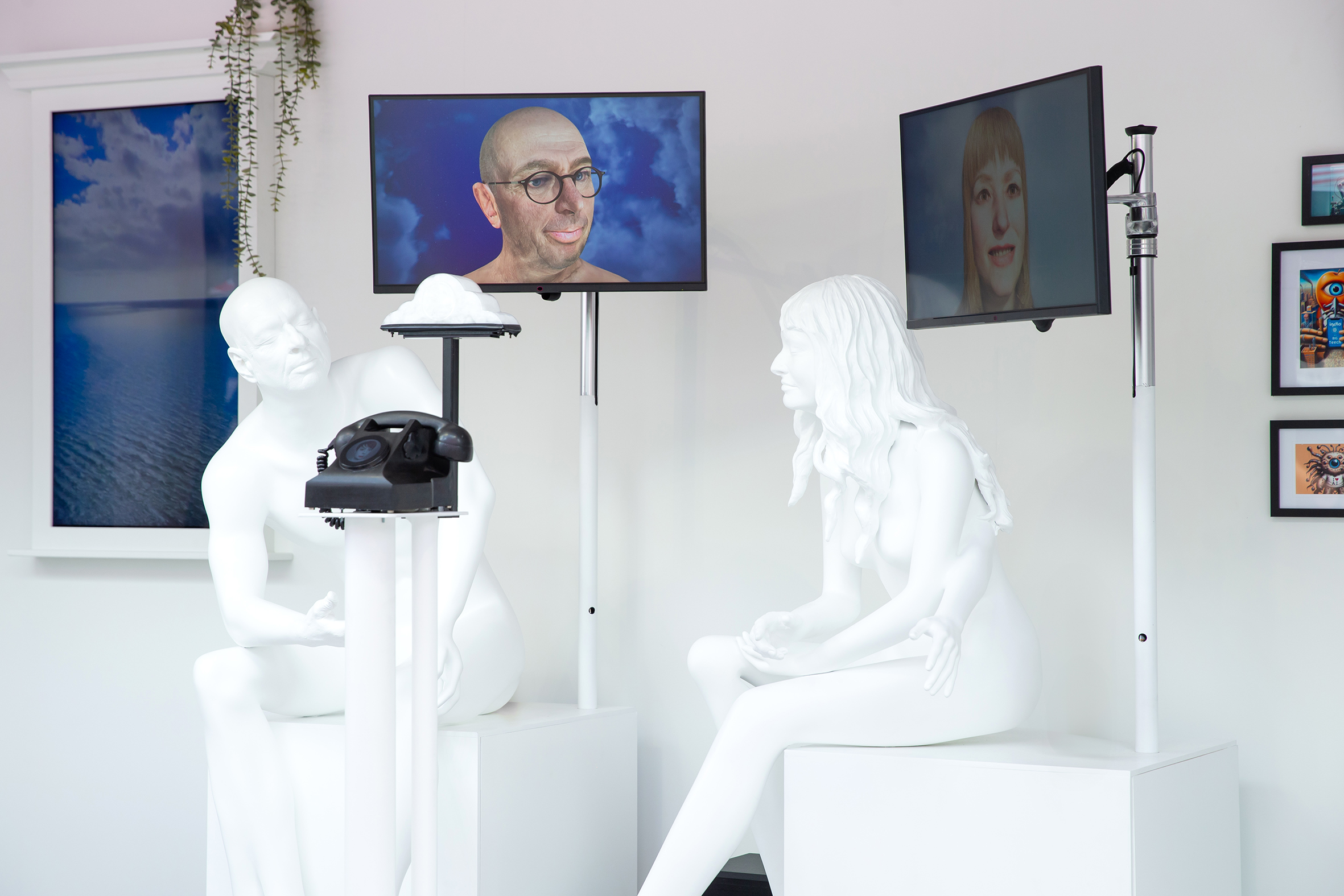
Svenja Kratz and Bill Hart, Simulated Selves, 2024. Interactive sculpture and video installation. Installation view: World Science Festival Brisbane. Image courtesy of World Science Festival and Queensland Museum.
Since the project finished in March, I have returned to planning the next phase within the Posthuman Genetic Legacies Project. The next step is to complete and compile cell quality and classification data to enable the uptake of the iPSC cell lines into commercial biomedical supply companies. The aim of this is to ensure long-term storage, use, and distribution of the cell line, but also to use the cell line as a case study to continue to examine the legal governance frameworks for biological material and potential personal risks related to disclosing personal information, including DNA. I am also keen to use the project as a platform to discuss how commercial interests often trump cultural significance, and that the only way the cells will have a chance of survival is by making them economically viable. While this aspect is still in development, I have also recently updated the work The Contamination of Alice: Genetic Legacy (2019–2022) to reflect the establishment of the SK1 and SK2 iPSC cell lines. Retitled Genetic Legacy: Cell Babies [iPSC SK1 & SK2], this iteration includes fixed and stained iPSC samples and additional elements that signal the tensions between shared, deep-time evolutionary and cross-species conceptions of life with current issues regarding ownership, governance, and commercial application. The work will be shown as part of the International Symposium on Electronic Art (ISEA) at the SAE University College in Brisbane in June. I am super excited to be part of the creative program.